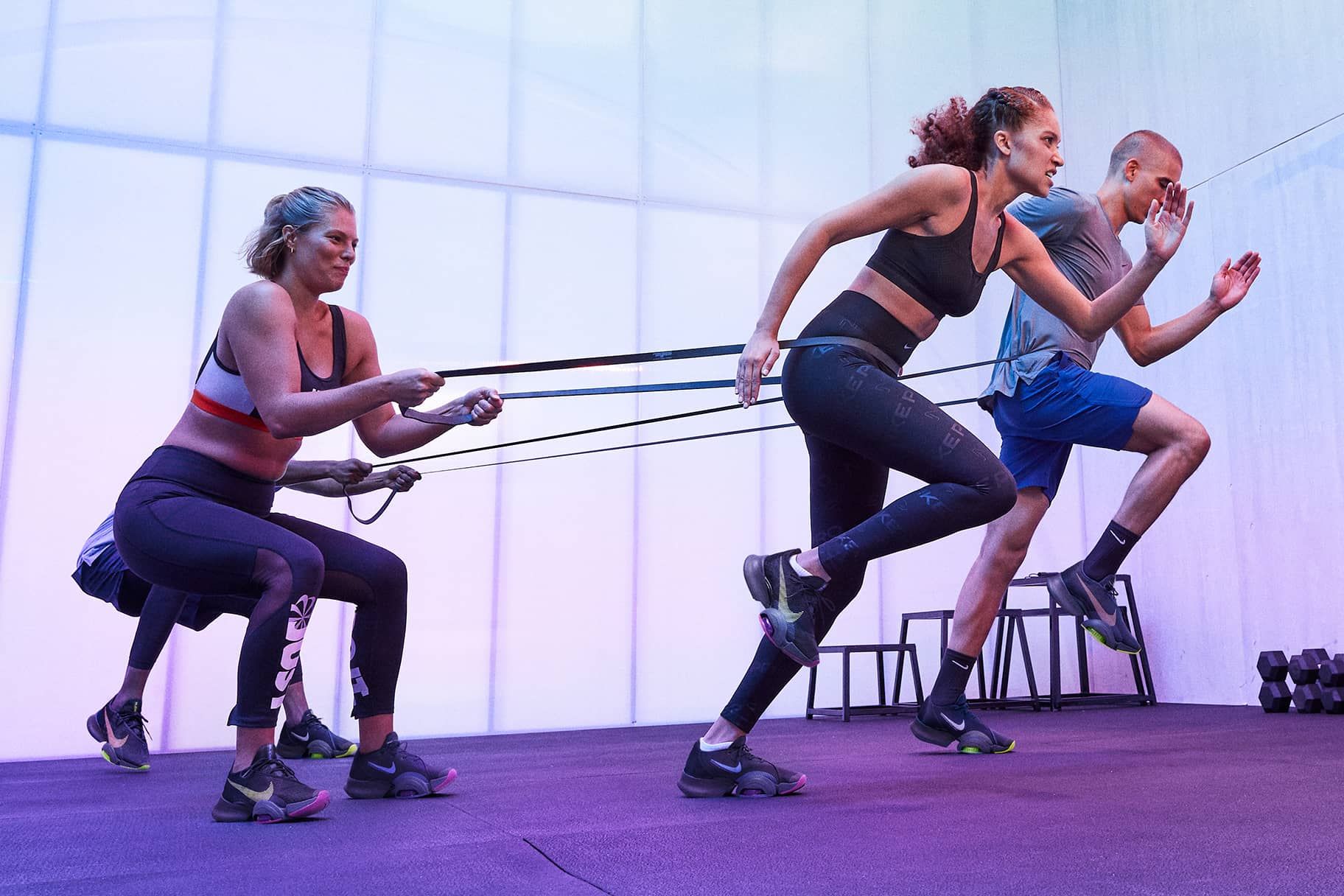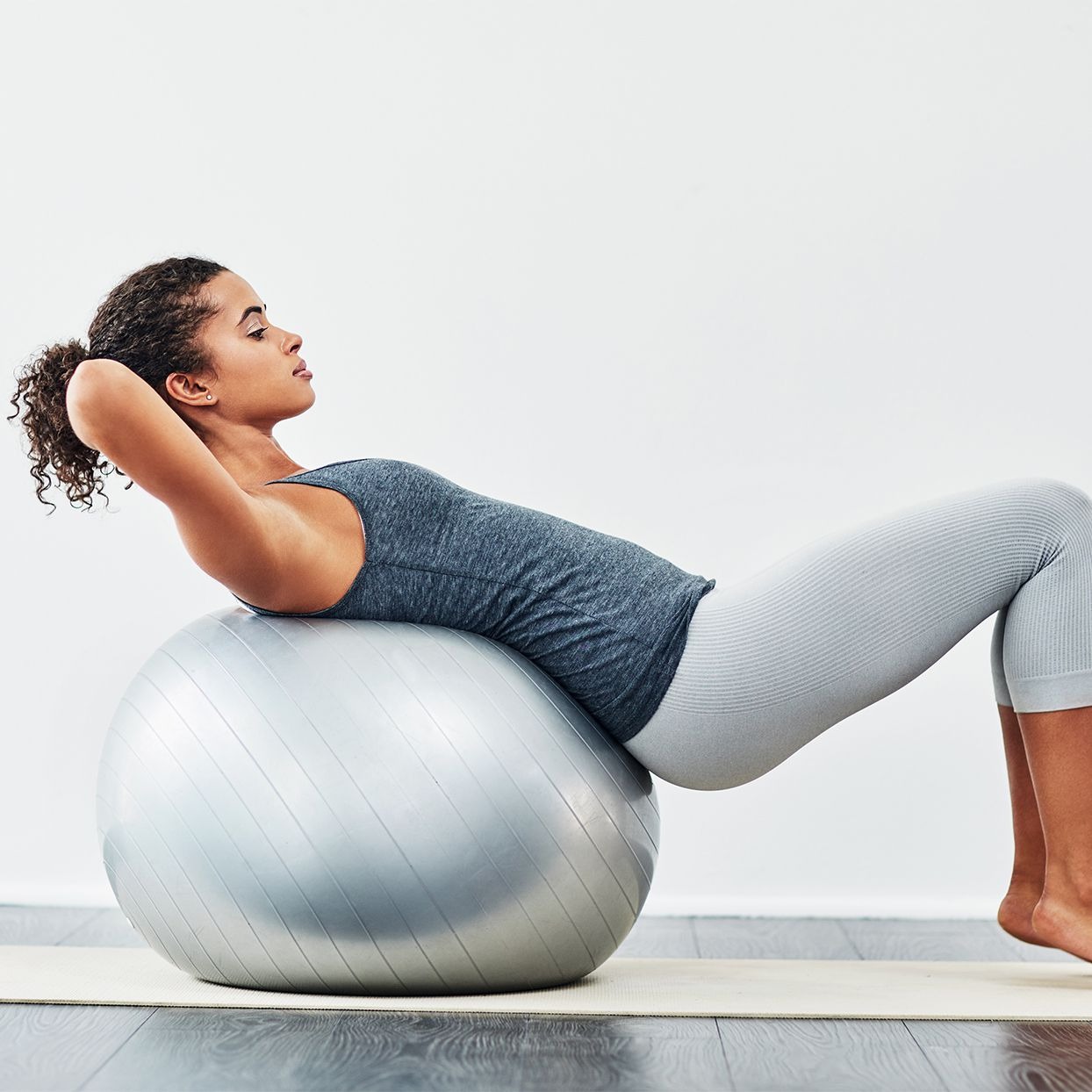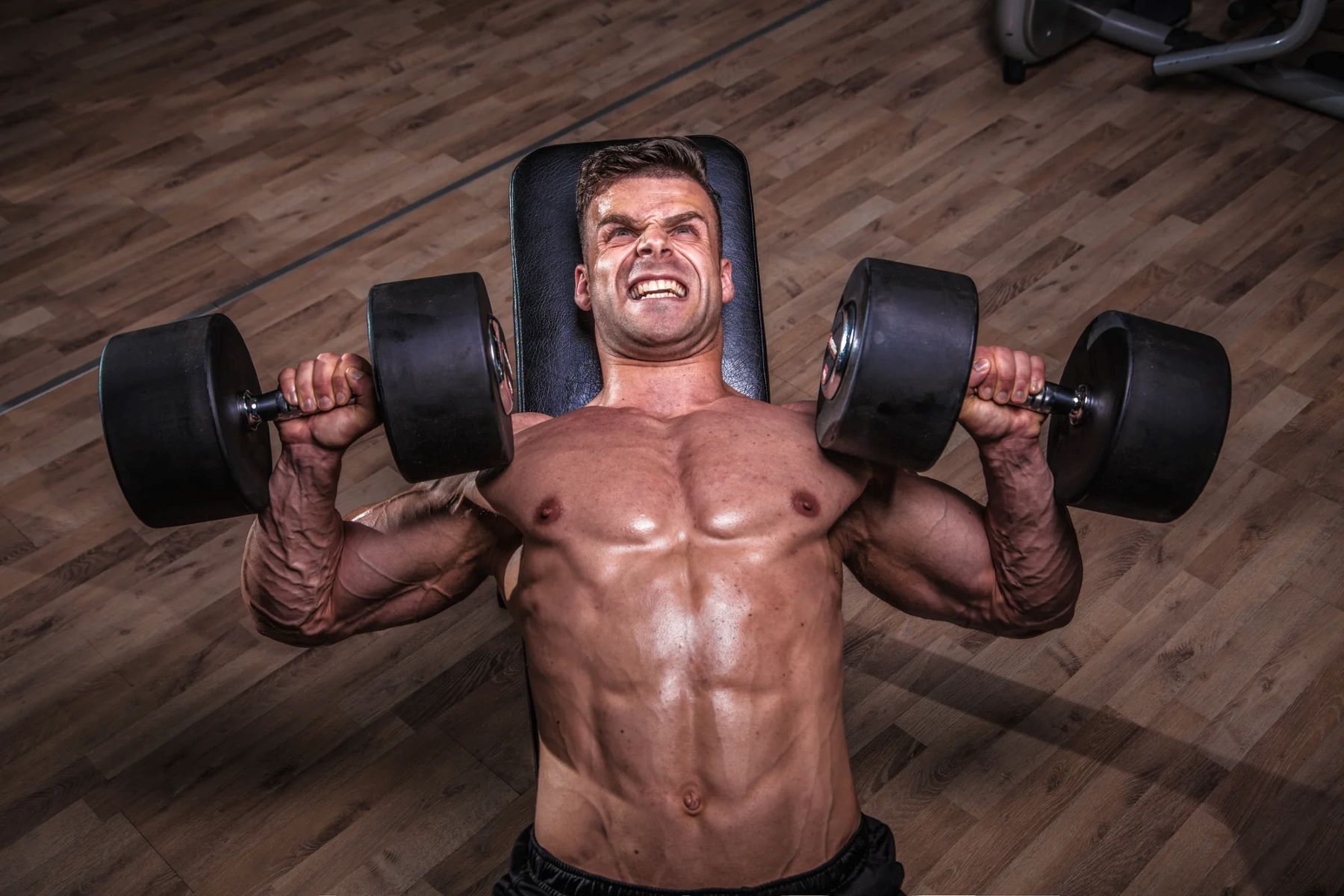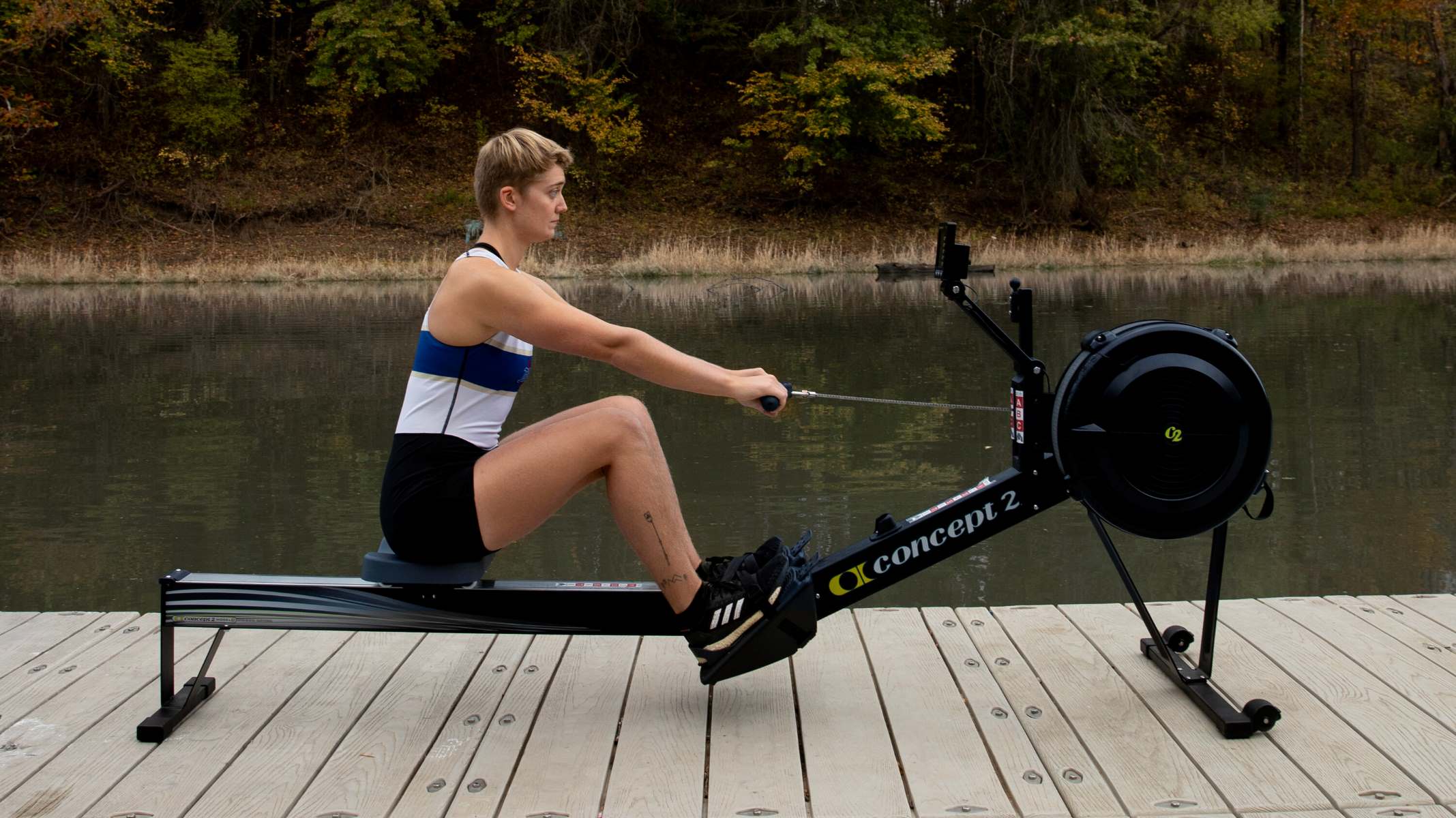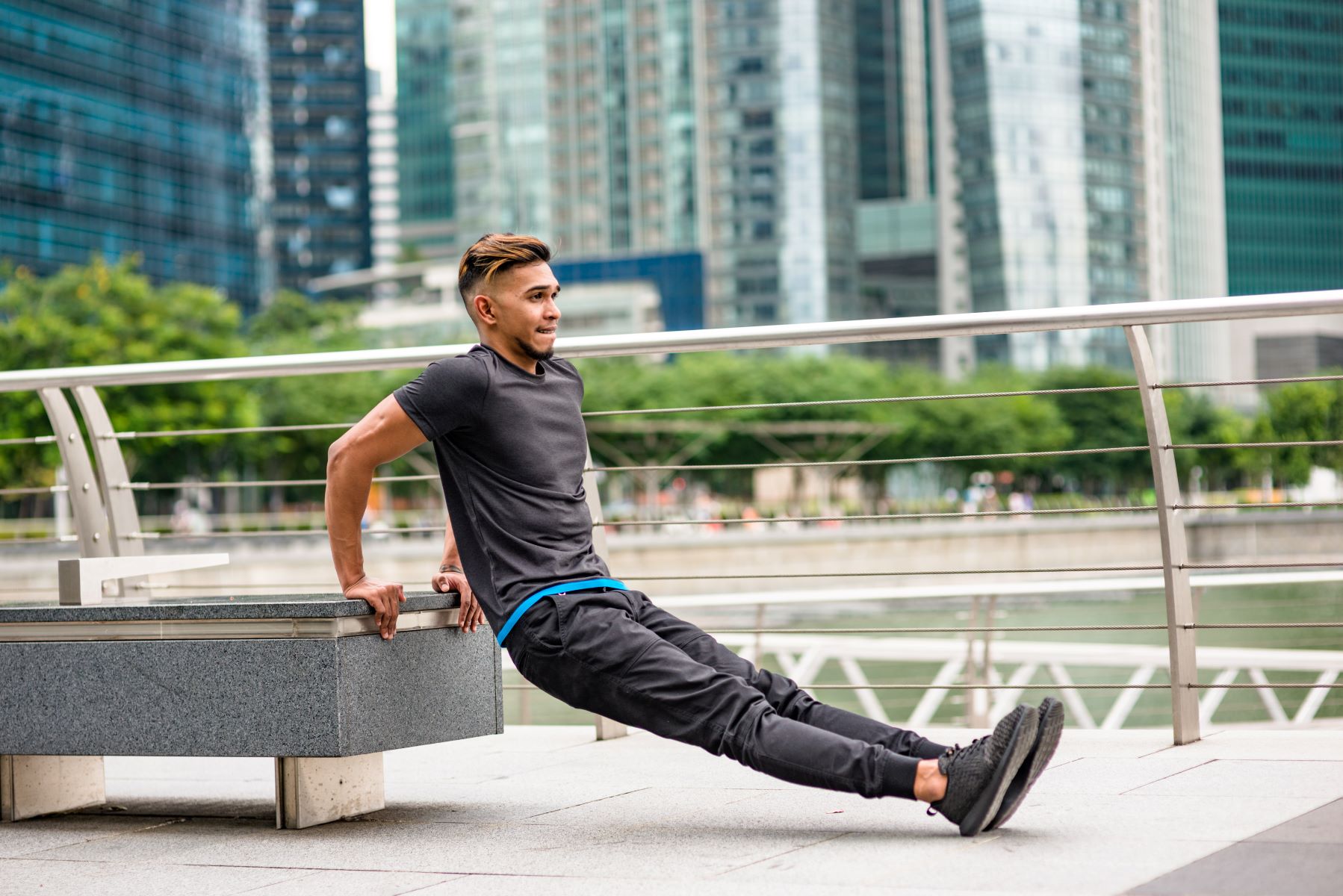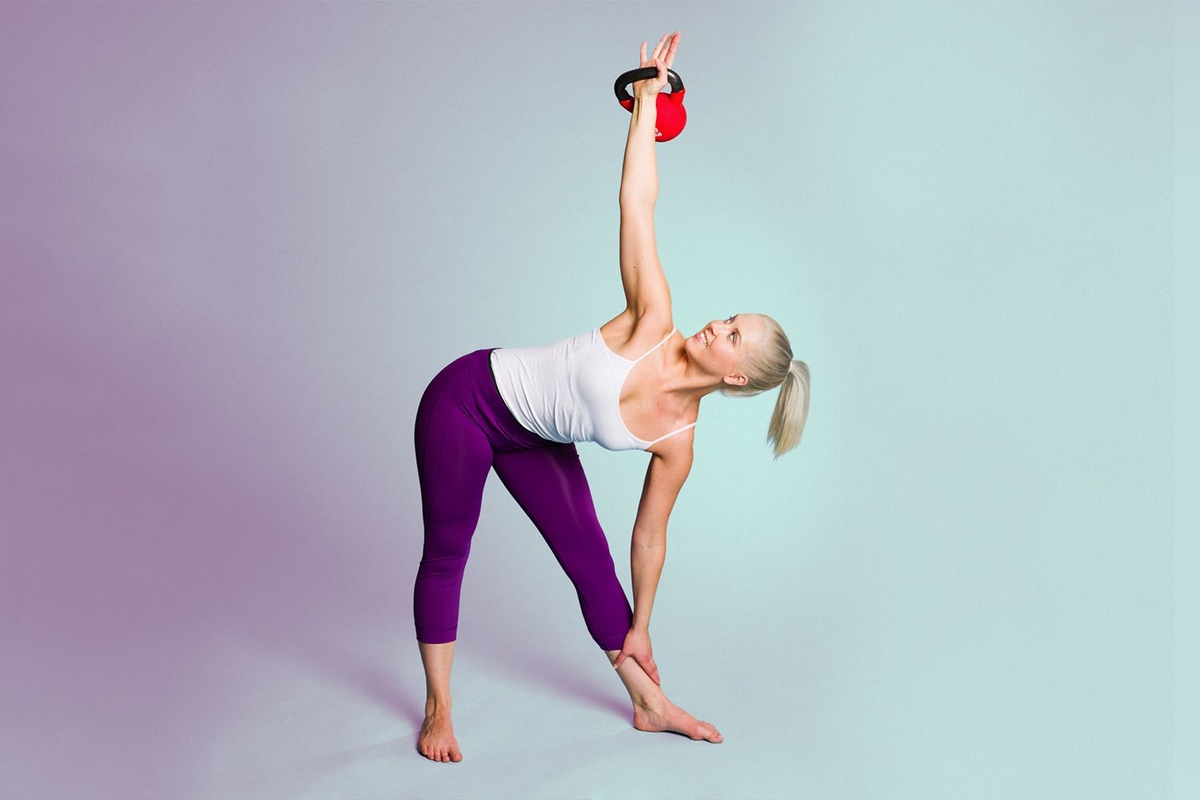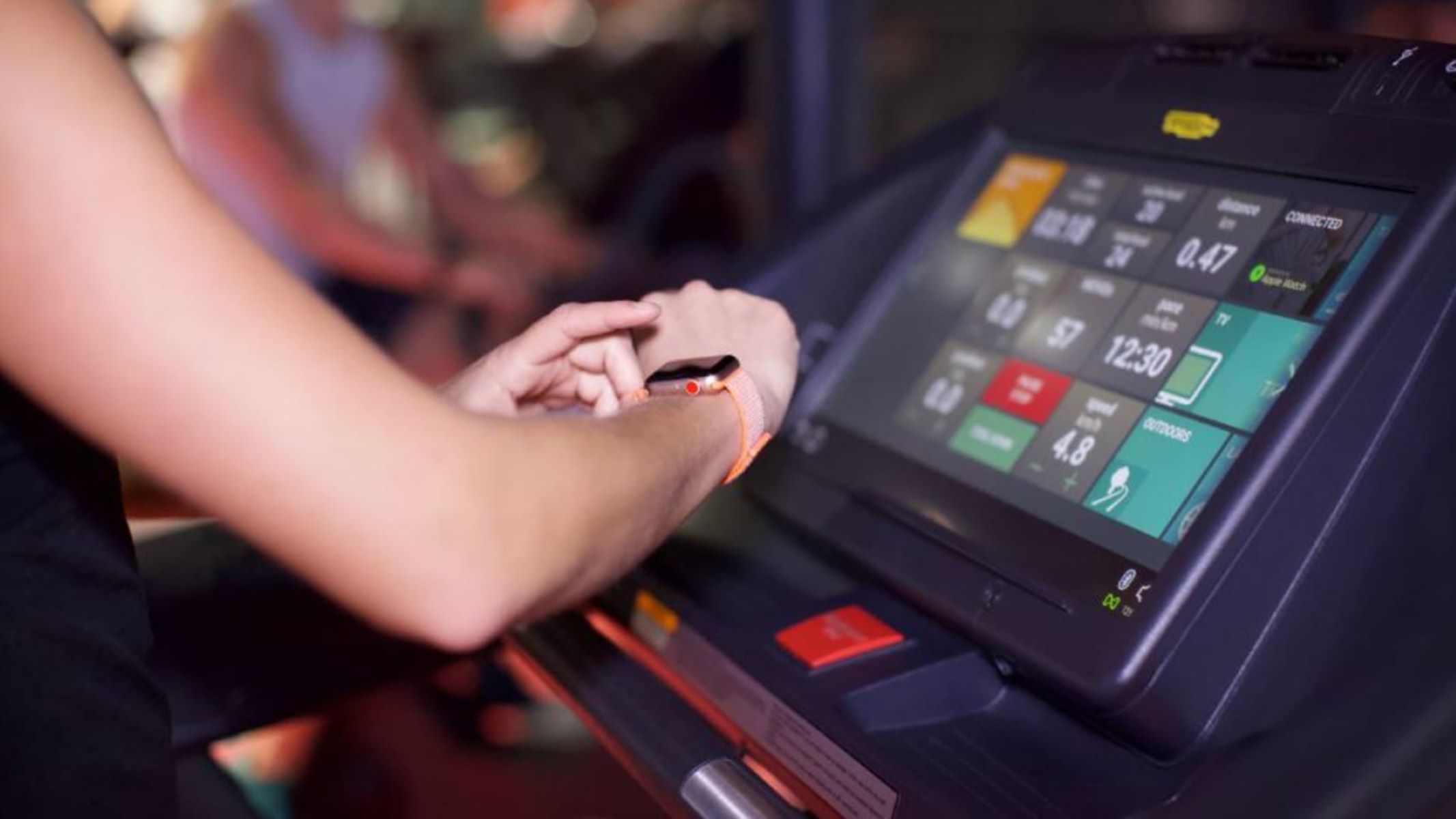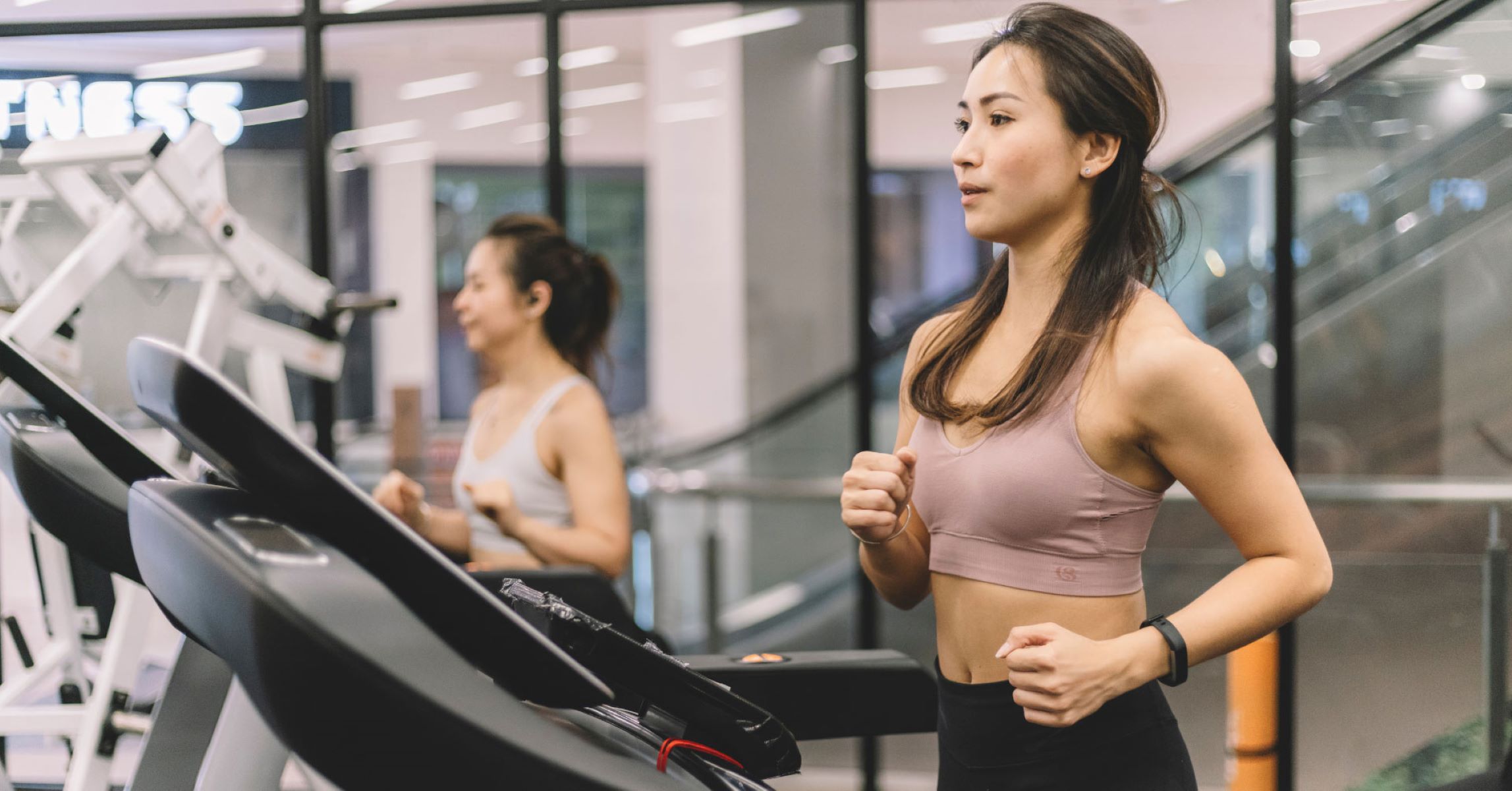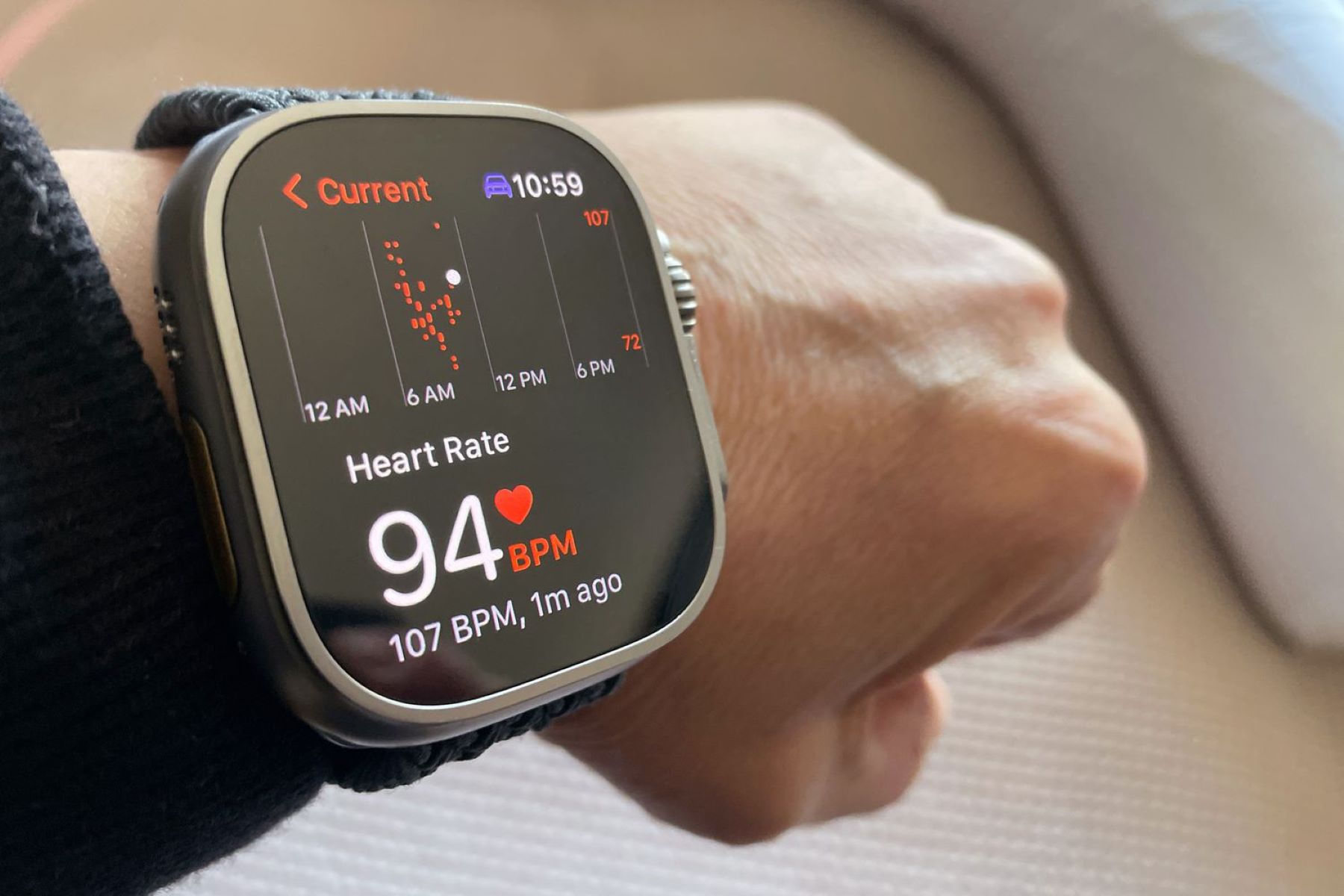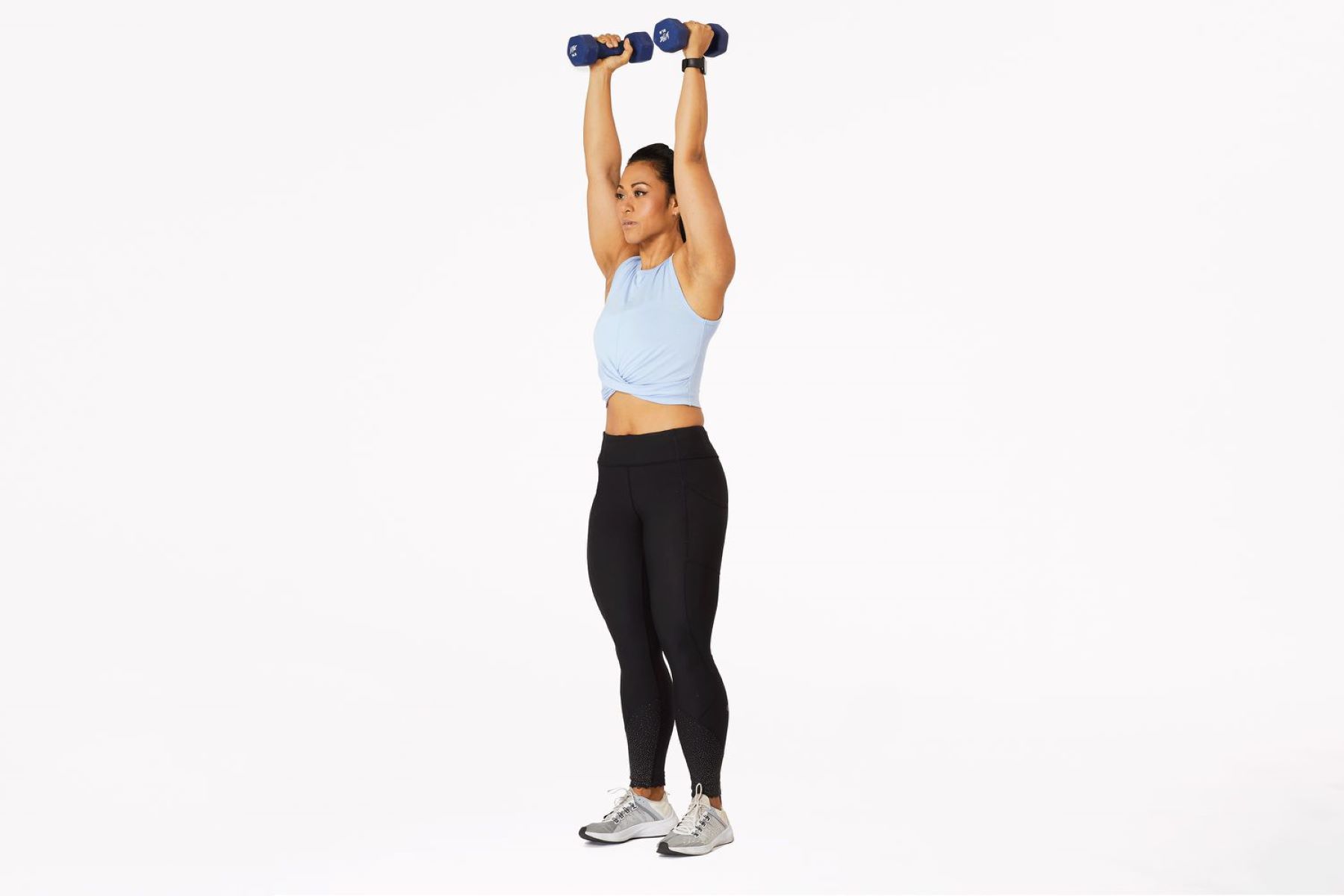

Featured
How To Workout Arms
Modified: August 21, 2023
Learn how to effectively workout your arms with our featured exercises and tips to build strength and definition. Enhance your arm muscles with our expert guidance.
Introduction
Welcome to the world of arm workouts! Whether you’re a fitness enthusiast or someone looking to tone and strengthen your arms, incorporating arm exercises into your fitness routine is a great way to achieve your goals. Strong, well-defined arms not only make you feel confident but also improve your overall physical functionality in activities such as lifting, carrying, and pushing.
When it comes to arm workouts, there is a wide range of exercises targeting different muscles in the arms, including the biceps, triceps, and shoulders. By engaging in regular arm workouts, you can build lean muscle mass, increase strength, improve endurance, and enhance your overall physique.
The purpose of this article is to provide you with a comprehensive guide to arm workouts, including various exercises and tips to maximize your results. Whether you prefer working out at the gym or in the comfort of your own home, there are plenty of options to choose from that cater to your specific needs and preferences.
Before diving into the different types of arm exercises, it is important to understand the anatomy of the arm muscles. The biceps, located in the front of the upper arm, are responsible for elbow flexion, while the triceps, located in the back of the upper arm, are responsible for elbow extension. The shoulders, which assist in many arm movements, also play a crucial role in arm workouts.
Now that you have a basic understanding of why arm workouts are important and how different muscles come into play, let’s explore some of the best arm exercises that will help you achieve toned and strong arms. Whether you’re a beginner or an experienced fitness enthusiast, there are exercises suitable for every fitness level.
Why Arm Workouts are Important
Arm workouts are not just about achieving aesthetically pleasing arms; they offer a wide range of benefits that contribute to your overall fitness and well-being. Here are several reasons why incorporating arm workouts into your fitness routine is important:
- Strength and Functionality: Strong arm muscles are essential for everyday activities such as lifting, carrying, and pushing. By engaging in arm workouts, you develop the strength and endurance needed to perform these tasks with ease, reducing the risk of injuries and improving your overall functionality.
- Toned and Sculpted Arms: If your goal is to achieve defined, sculpted arms, arm workouts are a key component. By targeting the biceps, triceps, and shoulders, you can build lean muscle mass and reduce any excess fat or flabbiness, resulting in toned and well-defined arms.
- Metabolic Boost: Engaging in resistance training exercises, such as arm workouts, can help increase your metabolism. As you build lean muscle mass, your body needs to work harder to maintain and repair these muscles, leading to an increase in your overall metabolic rate.
- Improved Posture: Strong arms can contribute to a better posture. When your arm muscles, especially the muscles in your upper back and shoulders, are well-developed, they provide support to maintain proper posture. By engaging in arm workouts, you can strengthen these muscles, which in turn helps improve your posture.
- Injury Prevention: Weak arm muscles can make you more prone to injuries, especially in activities that require repetitive arm movements or lifting heavy objects. By incorporating arm workouts into your fitness routine, you strengthen the muscles, tendons, and ligaments in your arms, reducing the risk of injuries and ensuring proper biomechanics during physical activities.
- Enhanced Athletic Performance: Strong arms are crucial in many athletic activities, such as throwing, swinging, and hitting. Whether you participate in sports like tennis, golf, or swimming, having strong arms can greatly enhance your performance by improving your power, accuracy, and technique.
As you can see, arm workouts offer numerous benefits beyond the appearance of well-toned arms. They improve your functional strength, boost your metabolism, prevent injuries, and enhance your overall athletic performance. So, whether you’re looking to build strength, improve your physique, or enhance your daily activities, incorporating arm workouts into your fitness routine is a smart choice.
Understanding Arm Muscles
Before diving into the various arm exercises, it is essential to have a basic understanding of the muscles that make up the arms. The arms consist of several key muscles: the biceps, the triceps, and the deltoids, which are located in the shoulders.
The biceps brachii, commonly known as the biceps, is a two-headed muscle located in the front of the upper arm. It is responsible for elbow flexion, which is the movement of bending the arm at the elbow. The biceps are often referred to as the “show muscles” due to their visibility when the arm is flexed. Strengthening the biceps can give your arms a more defined and muscular appearance.
On the other side of the upper arm, we have the triceps brachii or triceps. The triceps are a three-headed muscle group located at the back of the upper arm. They are responsible for elbow extension, which is the movement of straightening the arm at the elbow. The triceps play a crucial role in pushing exercises, such as push-ups and bench presses. Strengthening the triceps can provide stability and power during these movements.
In addition to the biceps and triceps, the deltoids are another important muscle group involved in arm movements. The deltoids are located in the shoulders and consist of three regions: the anterior deltoid, the lateral deltoid, and the posterior deltoid. While the deltoids primarily contribute to movements of the shoulder joint, they also play a role in various arm exercises.
Understanding the different arm muscles and their functions is essential in designing an effective arm workout routine. Targeting each muscle group will ensure balanced development and optimal results. Now, let’s explore the different types of arm exercises that focus on these muscles and help you achieve strong and well-defined arms.
Types of Arm Exercises
When it comes to arm workouts, there are various exercises that target different muscles in the arms, including the biceps, triceps, and shoulders. Including a variety of exercises in your routine helps to ensure well-rounded arm development. Let’s explore some of the most effective arm exercises:
- Dumbbell Bicep Curls: This exercise targets the biceps and is a staple in any arm workout routine. Hold a dumbbell in each hand with your palms facing forward. Slowly lift the dumbbells towards your shoulders, focusing on squeezing your biceps. Lower the weights back down in a controlled manner. Variation of this exercise includes hammer curls, where your palms face each other throughout the movement, targeting both the biceps and forearms.
- Tricep Dips: Tricep dips are great for isolating and strengthening the triceps. Position yourself on a sturdy bench or chair with your hands gripping the edge. Extend your legs out in front of you and slowly lower your body by bending at the elbows. Once your upper arms are parallel to the ground, push through your palms to raise your body back up. You can also perform this exercise using parallel bars.
- Hammer Curls: Hammer curls are an excellent variation of the traditional bicep curls. Hold a dumbbell in each hand with your palms facing your body. While keeping your elbows close to your sides, curl the dumbbells up towards your shoulders. This exercise targets not only the biceps but also the brachialis muscle, contributing to overall arm development.
- Skull Crushers: Skull crushers primarily target the triceps. Lie flat on a bench with a barbell or dumbbells held overhead, arms fully extended. Slowly lower the weight towards your forehead by bending at the elbows. Be cautious to maintain control and avoid putting excessive strain on your elbows. Extend your arms back up to the starting position, focusing on engaging your triceps.
- Push-Ups: Push-ups are a compound exercise that targets multiple arm muscles, including the chest, triceps, and shoulders. Begin in a plank position with your hands slightly wider than shoulder-width apart. Lower your body by bending at the elbows until your chest is just above the ground. Push through your palms to raise your body back up. Modify the intensity by performing push-ups on your knees or elevating your feet on an elevated surface.
These are just a few examples of arm exercises that can be incorporated into your arm workout routine. Remember to start with lighter weights and gradually increase the intensity as your strength and endurance improve. Additionally, it’s essential to maintain proper form and perform the exercises with a slow and controlled motion to maximize muscle engagement and minimize the risk of injury.
Now that you’re familiar with these arm exercises let’s move on to specific techniques and tips that can enhance the effectiveness of your arm workouts.
Dumbbell Bicep Curls
Dumbbell bicep curls are one of the most effective exercises for targeting the biceps muscle. Incorporating this exercise into your arm workout routine can help build strength, increase muscle mass, and give your arms a defined appearance.
To perform dumbbell bicep curls, follow these steps:
- Stand upright with a dumbbell in each hand, palms facing forward, and arms fully extended by your sides. Maintain a slight bend in your knees and engage your core for stability.
- Keep your elbows close to your body and slowly lift the dumbbells towards your shoulders by contracting your biceps.
- As you lift the dumbbells, focus on squeezing your biceps at the top of the movement and maintaining a controlled motion.
- Pause for a moment at the top of the movement, and then slowly lower the dumbbells back down to the starting position with a controlled eccentric motion.
- Repeat for the desired number of repetitions.
Variations of dumbbell bicep curls include:
- Hammer Curls: Instead of palms facing forward, use a neutral grip with your palms facing each other. This variation targets both the biceps and forearms, providing a well-rounded arm workout.
- Single-Arm Dumbbell Curls: Perform the bicep curls one arm at a time, allowing for better focus and isolation of each bicep muscle. This can help address any muscle imbalances between your left and right arms.
- Preacher Curls: These curls are performed while resting your upper arms on a preacher curl bench or against an incline bench. This variation emphasizes the peak contraction of the biceps, enhancing their overall development.
When performing dumbbell bicep curls, it’s important to keep a few key tips in mind:
- Start with manageable weights: Select dumbbells that allow you to perform the exercise with proper form. Gradually increase the weight as your strength improves.
- Maintain proper form: Keep your back straight, chest lifted, and avoid swinging your body or using momentum to lift the weights. Focus on using your biceps to perform the movement.
- Control the movement: Avoid using fast and jerky movements. Instead, perform the exercise with a slow and controlled motion, emphasizing the contraction of the biceps.
- Breathe properly: Inhale as you lower the dumbbells and exhale as you lift them, maintaining a steady and controlled breathing pattern.
- Allow for rest and recovery: Give your biceps sufficient time to recover between workouts. Overtraining can lead to muscle fatigue and hinder progress.
Incorporating dumbbell bicep curls into your arm workout routine, along with other arm exercises, will help you achieve stronger and more defined biceps. Remember, consistency and progressive overload are key for optimal results. Challenge yourself, but always prioritize proper form and listen to your body to avoid injuries.
Tricep Dips
Tricep dips are an effective exercise for isolating and strengthening the triceps, the muscles located at the back of the upper arm. By incorporating tricep dips into your arm workout routine, you can develop strength and definition in your triceps while improving overall upper body strength.
To perform tricep dips, follow these steps:
- Position yourself on a sturdy bench or chair, facing away from it.
- Place your hands shoulder-width apart on the edge of the bench, fingers pointing towards your body.
- Extend your legs out in front of you, keeping your feet firmly planted on the ground.
- Lower your body by bending at the elbows, keeping them close to your sides, until your upper arms are parallel to the ground.
- Push through your palms to raise your body back up to the starting position.
There are a few variations of tricep dips that you can incorporate into your routine:
- Bench Dips: This is the basic version of tricep dips, using a bench or chair as the support. Keep your legs extended in front of you to increase the challenge.
- Parallel Bar Dips: If you have access to parallel bars, you can perform tricep dips with a wider grip, emphasizing the outer portion of the triceps.
- Assisted Tricep Dips: If you’re unable to perform the exercise with your full bodyweight, you can use a resistance band or a dip assist machine to provide assistance as you build strength.
When performing tricep dips, keep the following tips in mind:
- Maintain proper form: Keep your back close to the chair or bench, and avoid arching or rounding your back. Keep your chest lifted and your shoulders down.
- Control the movement: Focus on using your triceps to lift and lower your body, avoiding any swinging or momentum. Keep the movement slow and controlled.
- Engage your core: Activate your core muscles to maintain stability and proper alignment throughout the exercise.
- Breathe properly: Inhale as you lower your body and exhale as you push yourself back up, maintaining a consistent breathing pattern.
- Gradually increase intensity: As you become stronger, you can make the exercise more challenging by adding weights to your lap or wearing a weight vest.
Tricep dips are an effective exercise that can help you develop strong and defined triceps. Incorporate them into your arm workout routine and remember to focus on proper form and controlled movements. As with any exercise, it’s important to listen to your body and not push beyond your comfort level. With consistency and dedication, you’ll see improvements in your tricep strength and overall upper body development.
Hammer Curls
Hammer curls are a popular variation of traditional bicep curls that effectively target not only the biceps but also the brachialis muscle in the upper arm. By incorporating hammer curls into your arm workout routine, you can develop well-rounded arm strength, increase muscle mass, and enhance the definition of your biceps and forearms.
To perform hammer curls, follow these steps:
- Stand upright with a dumbbell in each hand, palms facing your body, and arms fully extended by your sides. Maintain a slight bend in your knees and engage your core for stability.
- Keep your elbows close to your body and slowly lift the dumbbells toward your shoulders while maintaining the neutral grip (palms facing each other).
- As you lift the dumbbells, focus on contracting both your biceps and brachialis muscles, which are located to the side of the biceps.
- At the top of the movement, pause for a moment and squeeze your muscles to maximize the engagement.
- Gradually lower the dumbbells back down to the starting position with a controlled eccentric motion.
- Repeat for the desired number of repetitions.
Here are a few variations of hammer curls that you can incorporate into your routine:
- Hammer Preacher Curls: Perform hammer curls while resting your upper arms on a preacher curl bench or against an incline bench. This variation isolates and emphasizes the brachialis and biceps, providing a peak contraction for enhanced development.
- Single-Arm Hammer Curls: Perform the hammer curls one arm at a time, allowing for better focus and isolation of each arm. This can help address any muscle imbalances between your left and right sides.
- Concentration Hammer Curls: Sit on a bench with your legs spread apart and hold a dumbbell in one hand. Rest your elbow against the inner thigh of the same side and perform hammer curls while keeping your upper arm stationary. This variation enables a strict movement and further isolation of the biceps and brachialis.
When performing hammer curls, consider the following tips:
- Choose appropriate weights: Select dumbbells that challenge your muscles while still allowing you to maintain proper form and control throughout the exercise. Gradually increase the resistance as your strength improves.
- Maintain proper form: Keep your back straight, chest lifted, and avoid using your body’s momentum to lift the weights. Engage your biceps and forearms to perform the movement while minimizing involvement of other muscles.
- Control the movement: Focus on using a slow and controlled motion throughout the exercise, both in the lifting and lowering phases. This ensures optimal muscle contraction and helps prevent injuries.
- Breathe properly: Inhale as you lower the dumbbells and exhale as you lift them, maintaining a steady breathing rhythm throughout the exercise.
- Allow for rest and recovery: Provide ample time for your muscles to recover between workout sessions to allow for proper growth and avoid overtraining.
Incorporating hammer curls into your arm workout routine is an effective way to develop strength and definition in your biceps and forearms. Remember to focus on proper form, engage the relevant muscles, and gradually increase the intensity as your strength improves. Consistency and patience will yield noticeable results over time.
Skull Crushers
Skull crushers, also known as lying tricep extensions, are an effective exercise that primarily targets the triceps, helping to strengthen and tone the muscles at the back of your upper arms. By incorporating skull crushers into your arm workout routine, you can improve tricep strength and definition, enhance overall arm aesthetics, and increase upper body pressing power.
To perform skull crushers, follow these steps:
- Lie flat on a bench with your knees bent and feet firmly placed on the floor.
- Hold a barbell with an overhand grip, hands slightly wider than shoulder-width apart.
- Extend your arms above your chest, keeping them perpendicular to the floor.
- Slowly bend your elbows, lowering the barbell towards your forehead while keeping your upper arms stationary and your elbows pointing straight up.
- Aim to lower the barbell to a point where your triceps are fully stretched, but avoid touching your forehead.
- Pause for a moment, then engage your triceps to extend your arms and lift the barbell back to the starting position.
- Repeat for the desired number of repetitions.
Here are a few variations of skull crushers that you can incorporate into your routine:
- EZ-Bar Skull Crushers: Instead of using a straight barbell, you can use an EZ-bar which has a curved bar. This can place less strain on your wrists and can be more comfortable for some individuals.
- Dumbbell Skull Crushers: Utilize dumbbells instead of a barbell, holding one dumbbell in each hand. This variation allows for independent arm movement, addressing any muscle imbalances between your left and right triceps.
- Cable Skull Crushers: Use a cable machine with an attached rope or handle. Stand facing away from the machine, grab the handle, and perform the skull crushers while keeping your upper arms parallel to the floor.
When performing skull crushers, keep the following tips in mind:
- Maintain proper form: Keep your upper arms perpendicular to the floor throughout the movement, ensuring that only your forearms move. This targets the triceps effectively while minimizing strain on other muscle groups.
- Control the movement: Focus on a slow and controlled eccentric (lowering) phase to fully engage the triceps. Avoid using momentum or swinging the barbell as this can reduce the effectiveness of the exercise.
- Breathe properly: Inhale as you lower the barbell and exhale as you lift it back up, maintaining a steady and controlled breathing pattern.
- Choose appropriate weight: Select a weight that challenges your triceps without compromising your form. Gradually increase the resistance as your tricep strength improves over time.
- Use a spotter if needed: When lifting heavier weights, it can be helpful to have a spotter to assist and ensure your safety during the exercise.
Incorporating skull crushers into your arm workout routine can effectively target and strengthen your triceps. Remember to maintain proper form, control the movement, and allow for gradual progression in weight. Over time, skull crushers will contribute to improved tricep strength and definition as part of your overall arm training regimen.
Push-Ups
Push-ups are a classic and highly effective exercise that targets multiple muscle groups in the arms and upper body, including the chest, triceps, and shoulders. By incorporating push-ups into your arm workout routine, you can increase upper body strength, improve muscular endurance, and develop a well-defined and balanced physique.
To perform a push-up, follow these steps:
- Start in a plank position with your hands slightly wider than shoulder-width apart, palms flat on the ground, and fingers pointing forward.
- Position your feet hip-width apart and extend your legs fully, supporting your body weight on your toes.
- Engage your core, ensuring that your body forms a straight line from your head to your heels.
- Lower your body by bending your elbows, keeping them close to your sides, until your chest is just above the ground or as low as comfortable.
- Push through your palms, fully extending your arms and returning to the starting position.
- Repeat for the desired number of repetitions.
Here are a few variations of push-ups that you can incorporate into your routine:
- Modified Push-Ups: If you’re new to push-ups or need to build strength, drop your knees to the ground while maintaining a plank position. This reduces the resistance and makes the exercise more manageable.
- Wide Grip Push-Ups: Place your hands wider than shoulder-width apart to emphasize the chest muscles, specifically the outer pectoral muscles.
- Close Grip Push-Ups: Bring your hands closer together, forming a diamond shape with your thumbs and index fingers. This variation targets the triceps to a greater extent.
- Incline Push-Ups: Place your hands on an elevated surface, such as a bench or step, to make the exercise easier. This is beneficial for beginners or individuals who want to focus on technique before progressing to full push-ups.
When performing push-ups, keep the following tips in mind:
- Maintain proper form: Keep your body in a straight line from head to toe throughout the exercise. Avoid sagging your hips or lifting your buttocks too high.
- Engage your core and glutes: Activate your core and squeeze your glutes to keep your body stable and maintain proper alignment.
- Breathe properly: Inhale as you lower your body and exhale as you push yourself back up, maintaining a consistent breathing pattern.
- Gradually increase difficulty: As you become stronger, progress to more challenging variations or increase the number of reps or sets.
- Listen to your body: If you experience pain or discomfort, modify the exercise or consult with a fitness professional to ensure proper execution.
Push-ups are a versatile exercise that can be performed anywhere, making them a convenient option for strengthening your arms and upper body. By consistently incorporating push-ups into your routine and gradually increasing the intensity, you can achieve enhanced upper body strength, improved muscular endurance, and a more sculpted physique.
Arm Workouts with Resistance Bands
Resistance bands are versatile and affordable exercise tools that can be used to target and strengthen the muscles in your arms. Whether you’re at home, in the gym, or traveling, incorporating resistance band exercises into your arm workout routine can provide a challenging and effective training session. Here are several arm exercises you can do using resistance bands:
- Bicep Curls: Step onto the resistance band with both feet shoulder-width apart. Hold the band with your palms facing forward, arms fully extended by your sides. Keeping your elbows close to your body, curl your hands towards your shoulders while maintaining resistance in the band. Pause for a moment at the top of the movement and slowly return to the starting position.
- Tricep Extensions: Stand with one foot on the resistance band and hold the other end with one hand behind your head. Keeping your upper arm stable, extend your forearm upward until your arm is fully extended. Control the movement as you return to the starting position and repeat for the desired reps before switching sides.
- Shoulder Press: Step onto the resistance band and hold both ends at shoulder height, palms facing forward. Press your arms upward until fully extended overhead, keeping your core engaged and avoiding arching your back. Lower the bands back down, maintaining control and tension in the band.
- Resistance Band Push-Ups: Loop the resistance band around your back and secure it in your hands. Assume a push-up position with your hands slightly wider than shoulder-width apart. Perform a push-up, allowing the resistance band to provide additional resistance, targeting your chest, triceps, and shoulders.
These exercises are just a starting point, and you can explore other resistance band workouts to further challenge your arm muscles. The key advantages of using resistance bands for arm workouts include:
- Portability: Resistance bands are lightweight and compact, making them convenient for on-the-go workouts. You can easily toss them in your bag or suitcase, allowing you to stay consistent with your arm training wherever you are.
- Range of Resistance: Resistance bands come in various levels of resistance, allowing you to adjust the intensity of your workouts. As your strength improves, you can progress to stronger resistance bands to continue challenging your arm muscles.
- Joint-Friendly: Resistance band exercises are generally low-impact and put less stress on your joints compared to exercises with weights. This makes them a suitable option for those with joint issues or who are recovering from injuries.
- Versatility: In addition to arm exercises, resistance bands can target other muscle groups as well. You can adapt them for exercises such as band rows, band pull-aparts, and band shoulder raises to further enhance your full-body workout.
When performing resistance band exercises for your arms, it’s important to focus on maintaining proper form, controlling the movement, and engaging the targeted muscles. Gradually increase the resistance or the number of repetitions as your strength improves over time.
Whether you’re a beginner or an advanced fitness enthusiast, incorporating resistance band exercises into your arm workout routine can provide a challenging and effective way to strengthen and tone your arms while enjoying the benefits of convenience and versatility.
Tips for Effective Arm Workouts
To make the most out of your arm workout routine and maximize your results, consider the following tips:
- Vary Your Exercises: Incorporate a variety of arm exercises that target different muscle groups within the arms, such as biceps, triceps, and shoulders. This ensures balanced development and prevents plateauing.
- Focus on Full Range of Motion: Perform each exercise through a full range of motion to engage the muscles fully. Avoid cutting corners or using momentum to complete the movement.
- Use Proper Form: Maintain proper form throughout each exercise, ensuring that your movements are controlled and effective. Focus on the targeted muscles and avoid using excessive momentum or swinging.
- Gradually Increase Intensity: As your strength and endurance improve, gradually increase the intensity of your workouts. This can be done by adding resistance, increasing the number of repetitions, or reducing the rest time between sets.
- Listen to Your Body: Pay attention to your body’s signals and avoid pushing yourself too hard. It’s essential to challenge yourself, but also prioritize proper form and avoid overtraining.
- Warm-Up Properly: Before starting your arm workout, warm up your muscles with light cardio and dynamic stretches. This helps increase blood flow to your muscles and prepares them for the upcoming exercises.
- Include Rest Days: Allow your muscles time to recover and grow stronger by incorporating rest days into your workout schedule. Rest days are just as important as training days and aid in preventing overuse injuries.
- Stay Hydrated: Drink plenty of water throughout your workout and the rest of the day to stay hydrated. Proper hydration enhances performance and supports muscle recovery.
- Combine Strength Training and Cardio: Incorporate cardiovascular exercises, such as jogging, cycling, or swimming, in addition to your arm workouts. This helps to burn fat and improve overall fitness and endurance.
- Track Your Progress: Keep a record of your workouts, including the exercises, weights, sets, and repetitions performed. This allows you to track your progress over time and adjust your training accordingly.
By incorporating these tips into your arm workout routine, you can optimize your efforts and achieve the results you desire. Remember, consistency and gradual progression are key to building strength, improving muscle definition, and achieving your arm fitness goals.
Conclusion
Congratulations! You now have a comprehensive understanding of arm workouts and how to effectively strengthen and tone your arms. By incorporating various exercises, like dumbbell bicep curls, tricep dips, hammer curls, skull crushers, push-ups, and resistance band workouts, you can target different muscles in your arms for balanced development and optimal results.
Remember to maintain proper form, use a full range of motion, and gradually increase the intensity of your workouts as your strength improves. It’s important to listen to your body, prioritize rest days, and stay hydrated throughout your fitness journey.
Whether your goal is to build strength, increase muscle mass, improve functionality, or enhance your overall physique, consistent arm workouts will help you achieve your objectives. Combine your arm workouts with a well-rounded fitness routine that includes cardiovascular exercises and proper nutrition to further support your progress.
Now it’s time to put these tips and exercises into action. Grab your dumbbells, resistance bands, or head to the gym, and start sculpting strong and defined arms. Embrace the journey, stay committed, and enjoy the rewards of your hard work. Here’s to your strong and confident arms!
